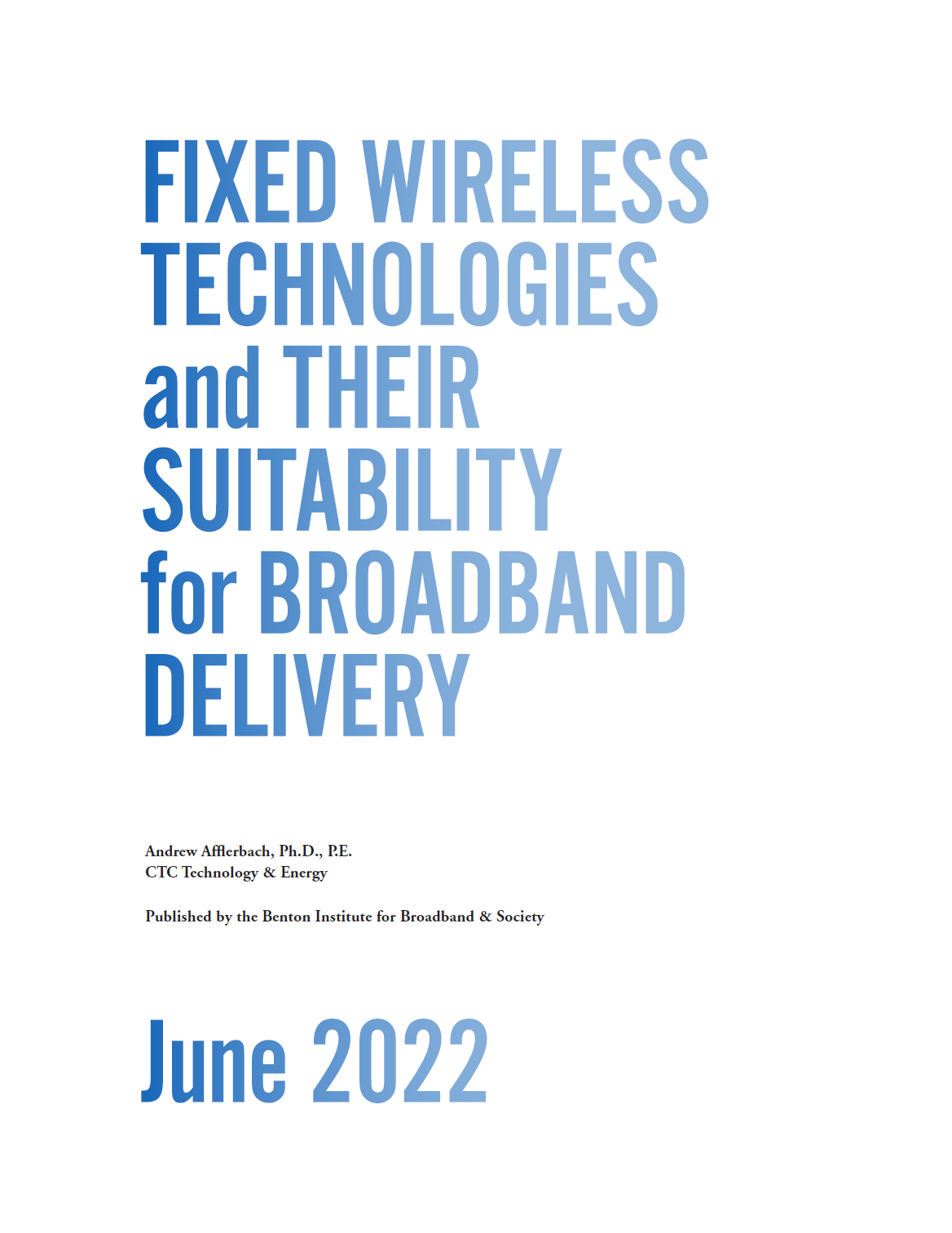Andrew Afflerbach
How Fixed-Wireless Technologies Compare to Fiber
As state and local governments and their partners plan to invest billions of dollars in federal funding to build broadband infrastructure, choosing the best technology will have significant long-term implications.
Fixed Wireless Technologies and Their Suitability for Broadband Delivery
To aid state and local policymakers, this report offers an engineering analysis of fixed-wireless technologies and their suitability for delivering broadband service in various environments. The report addresses a range of critical technology and cost considerations related to fixed-wireless networks—and, as a point of comparison, to fiber-to-the-premises networks. At a high level, the report concludes the following:
As state and local governments and their partners plan to invest billions of dollars in federal funding to build broadband infrastructure, choosing the best technology will have significant long-term implications.

The Broadband Lifeline in a Pandemic: Strategies for Provisioning Broadband to Temporary Emergency Sites
I’ll describe a way for your community to meet ar critical need – service to ad hoc emergency sites like surge hospital locations, triage centers, and even parking lots where mass testing or treatment may occur. And there will be a need for service to other ad hoc locations, like temporary housing sites for emergency and health care workers or national guard personnel. All of these will require broadband, fast, both for public needs and to support first responders and health care workers.
The Broadband Lifeline in a Pandemic: How Your Community Can Quickly Deploy Free Wi-Fi to Meet Urgent Needs at Public Housing and Other Locations
Over the past several days we have heard from numerous communities seeking guidance for delivering broadband to unconnected households as fast as possible to meet urgent, critical needs for remote work and education. Free community-provided Wi-Fi can be a lifeline during the pandemic. Given that the current crisis doesn’t seem like it will be short-term, a more robust alternative is to set up a Wi-Fi network for multi-dwelling buildings such as public housing developments. This approach needs to be customized for each building but would include the same key elements:
An Engineer’s View of the Department of Justice’s T-Mobile/Sprint/DISH Strategy
To address the loss of a mobile communications competitor that will result from the proposed T-Mobile/Sprint merger, the Department of Justice (DOJ) has proposed a solution that seeks to enable DISH Network to emerge as a fourth national facilities-based wireless carrier. From an engineering perspective, however, DOJ’s approach to enabling DISH’s deployment is not guaranteed to prove adequate to maintain competition comparable to that currently offered over Sprint’s network.

How Smart Strategy and Rigorous Analysis Enable Boston to Save While Effectuating City and Public Broadband Needs
Like most cities, Boston (MA) needs an expanded fiber optic network to serve the fast-growing needs of City schools, police, and other departments—plus a range of applications like public safety cameras. Boston understood its needs—but needed more clarity on its choices. Would it be possible to affordably lease all the fiber it might need for decades to come? Or should it build its own fiber—expanding the existing City network known as BoNET?
How Localities Can Prepare for—and Capitalize on—the Coming Wave of Public Safety Network Construction
In the coming months, localities around the nation can expect to begin receiving a flood of applications to construct the first of hundreds—perhaps thousands—of new telecommunications towers up to 300 feet high, plus applications to attach hundreds of thousands of “small cell” wireless devices on buildings, utility poles, and new structures. A major driver of this activity is FirstNet, the federal organization overseeing the deployment of a Nationwide Public Safety Broadband Network (NPSBN). These developments will bring clear public safety benefits.
The Art of the Possible: An Overview of Public Broadband Options
More and more local governments across the US are building broadband infrastructure to provide high speed Internet access to better enable their schools, businesses and citizens to compete in today's digital economy.
This report, from New America’s Open Technology Institute (OTI) and CTC Technology & Energy, is intended to serve as a primer for local government and community leaders on different approaches to public broadband networks.
The report addresses broadband technologies, network business models, and the considerable benefits beyond the balance sheet that public networks can provide to communities.
“For nearly two decades, hundreds of innovative local governments have built and operated fiber optic networks to meet internal government needs and the needs of the public,” said Joanne Hovis, President of CTC Technology & Energy [and member Benton Foundation Board of Directors]. “This report offers a survey of some of the strategies they have developed, with background about technology, business planning, risks, and benefits. This report's goal is to provide sufficient guidance that communities can begin to develop their own approaches to meeting local needs.”

